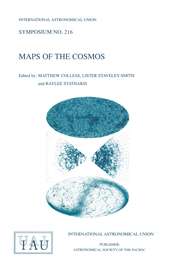Article contents
Heavy Neutron Stars? A Status Report on Arecibo Timing of Four Pulsar – White Dwarf Systems
Published online by Cambridge University Press: 19 July 2016
Abstract
Relativistic phenomena (orbital precession, Shapiro delay, and/or orbital decay) have been measured in Arecibo timing observations of four pulsar-white dwarf binaries, leading to constraints on the neutron star masses. We have detected the decay of the PSR J0751+1807 orbit due to gravitational radiation emission, the first such measurement in a binary with a low mass ratio (m2/m1 ≪ 1). Timing data constrains the mass of this pulsar to bet between 1.6 and 2.8 M⊙. Masses of the other pulsars are in marginal agreement with the canonical pulsar mass of 1.35 M⊙, but higher values are preferred.
- Type
- Part 1: Neutron Star Formation and Evolution
- Information
- Copyright
- Copyright © Astronomical Society of the Pacific 2004
References
- 9
- Cited by




